Abstract
A number of monoclonal antibodies were derived from the spleen cells of dinitropheryl (DNP)-immunized mice. Both T-dependent and T-independent carriers were used, and the intensity and length of immunization were varied. It was found that some of the antibodies had only idiotypic (Ab1) reactivity, while others had both idiotypic (Ab1) and anti-idiotypic (Ab2) reactivity. Among the latter antibodies some molecules reacted specifically with DNP and with the combining site of anti-DNP antibodies (epibodies), while others bound DNP and anti-DNP Abs as well as a variety of unrelated antigens (polyreactive antibodies). The proportion of the three types of antibodies (antigen-specific, epibodies and polyreactive antibodies) varied with the nature of the carrier, the intensity of the immunization, and the length of the immunization process. Further characterization of the epibodies, which were predominant in the secondary response to DNP-keyhole limpet haemocyanin (KLH), showed that both Ab1 and Ab2 reactivities were inhibited by both soluble ligands (DNP and anti-DNP), indicating that the specific combining site of the monoclonal antibodies (mAbs) (and/or of the rabbit anti-DNP antibody in the case of Ab2) was involved in both activities. Both Ab1 and Ab2 reactivities were removed by absorption of the mAbs with either immobilized DNP or immobilized rabbit anti-DNP. The mAbs were capable of binding themselves as well as to other mAbs with the same characteristics. The affinity constants of several mAbs for both the DNP and anti-DNP ligands were determined.
Full text
PDF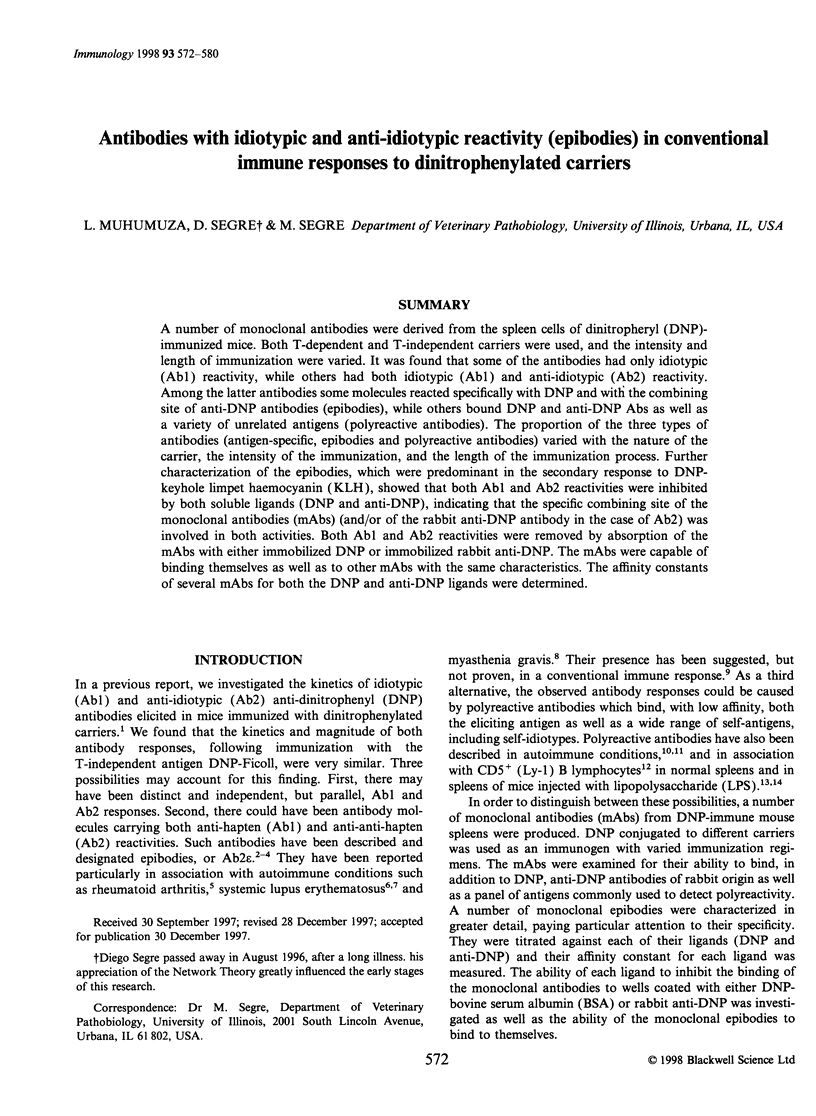
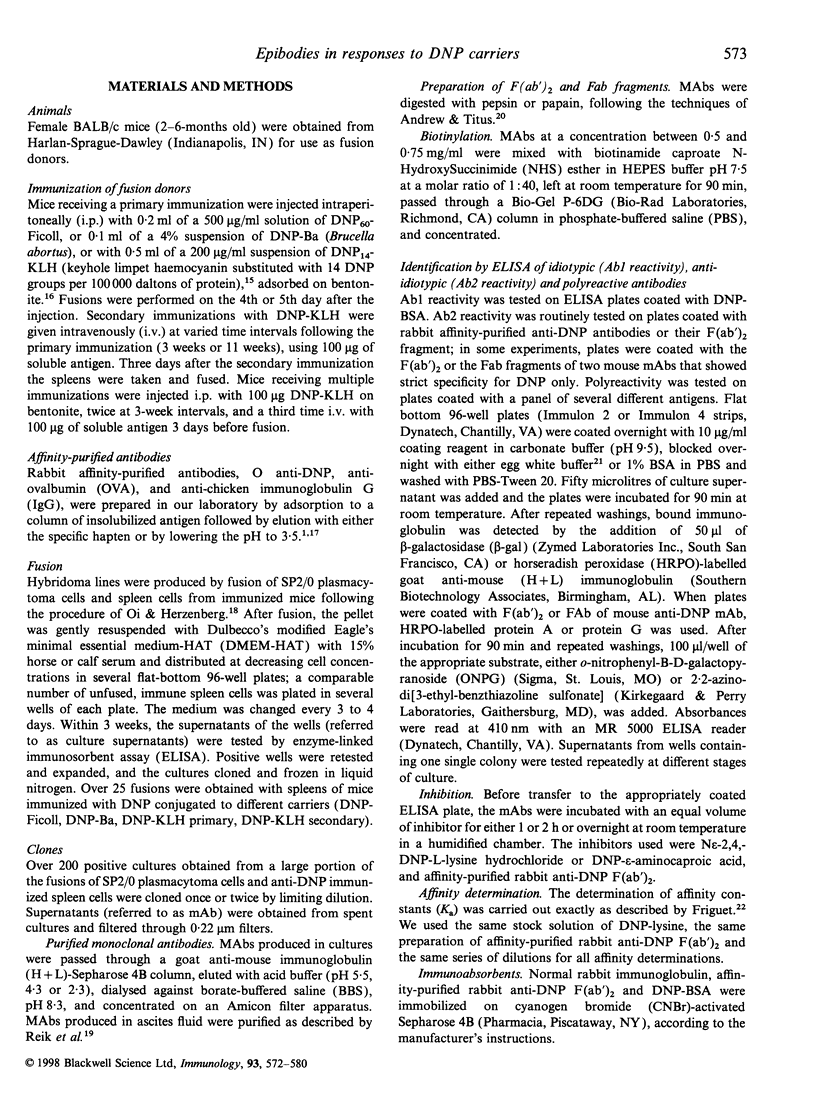
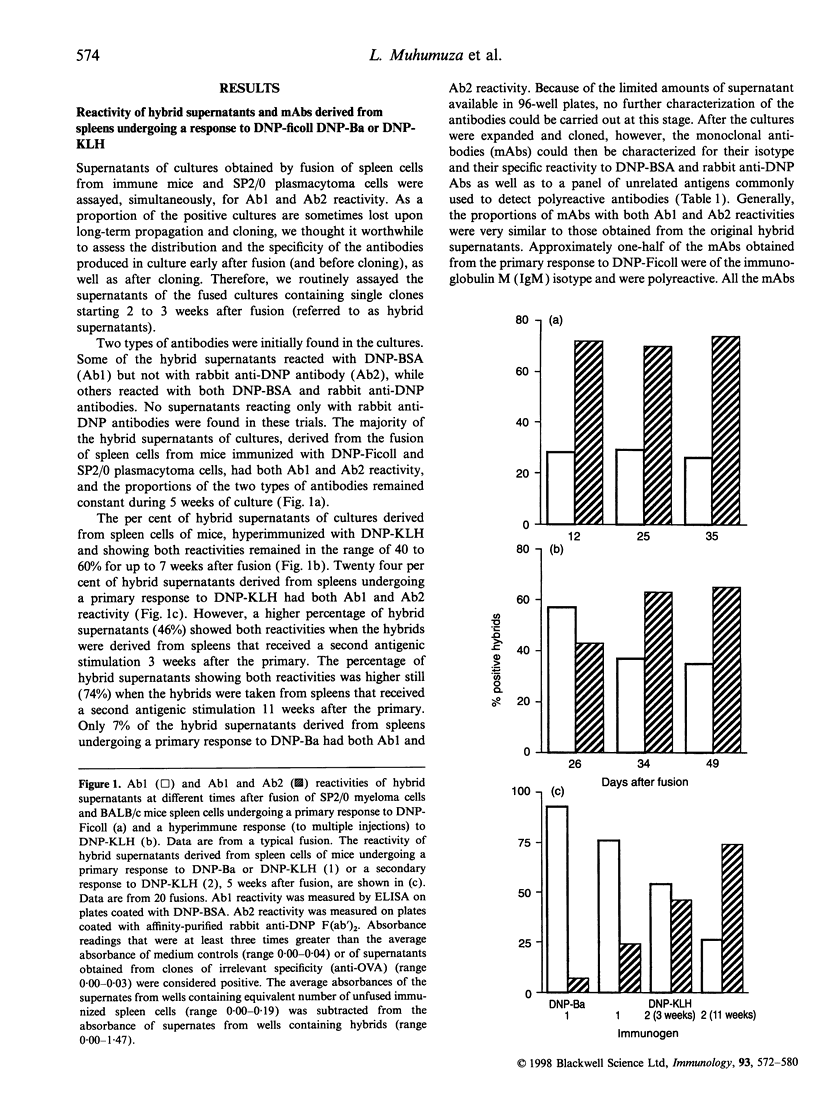
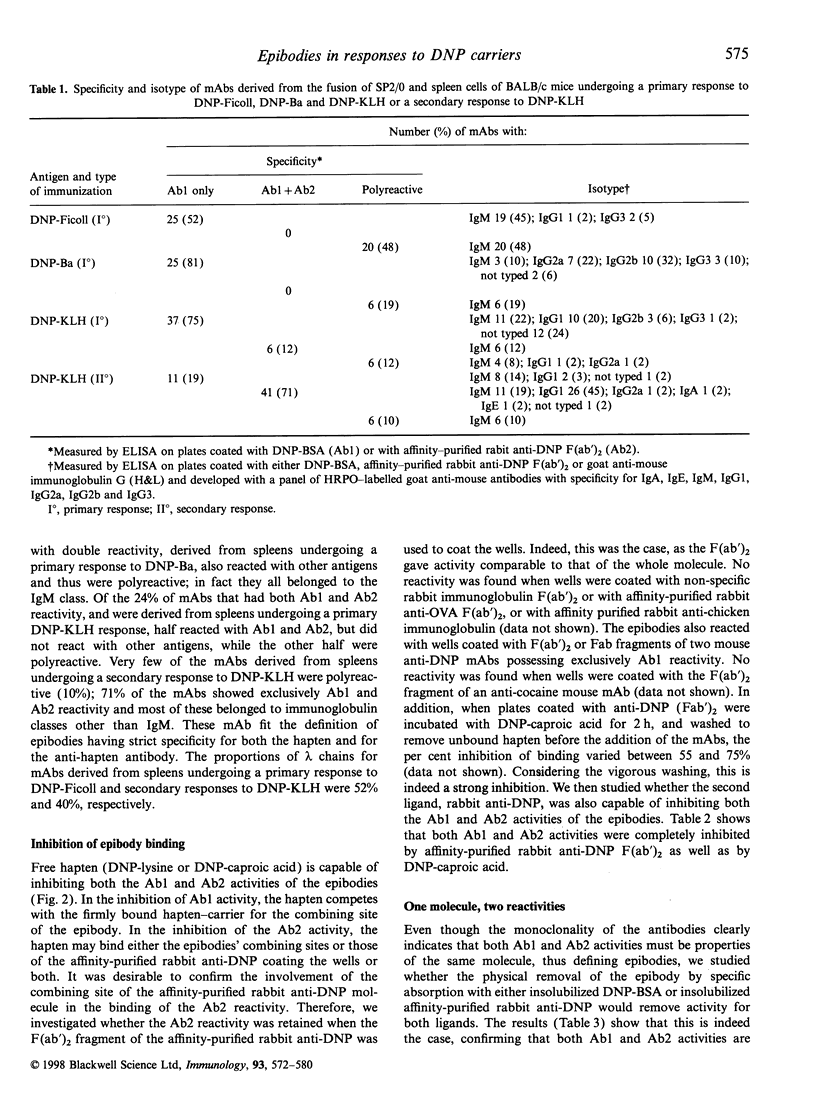
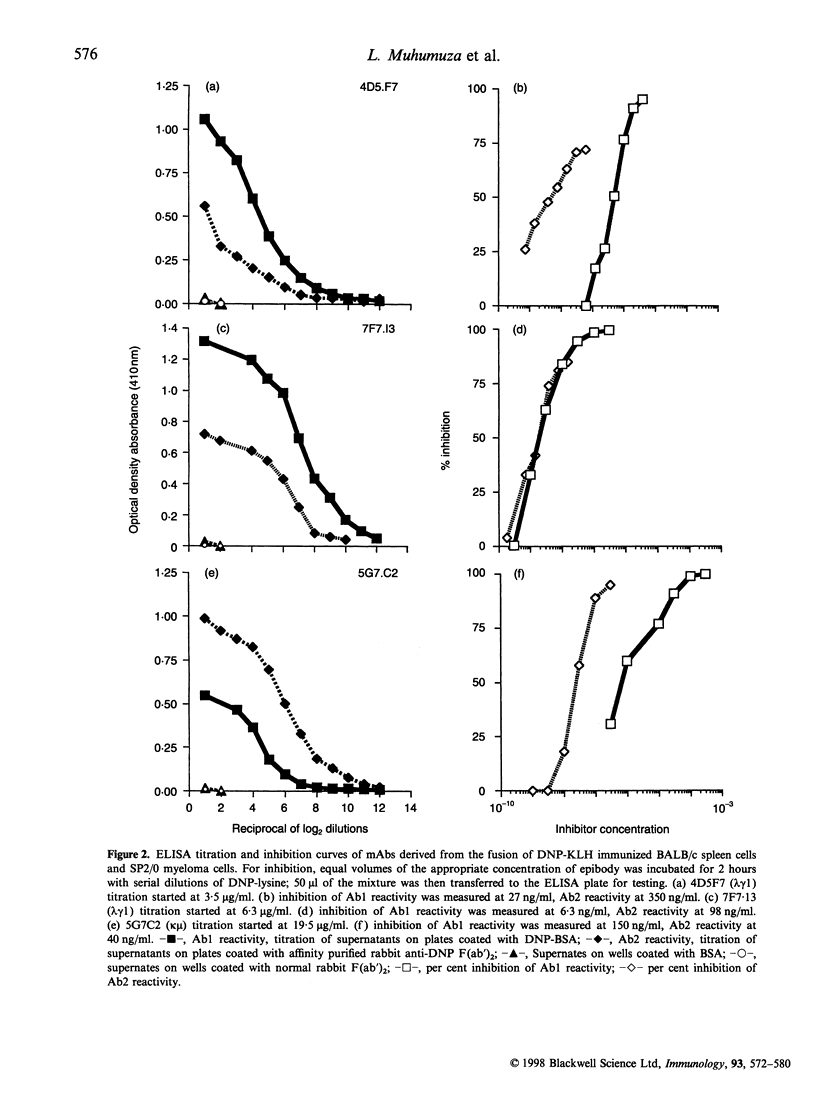
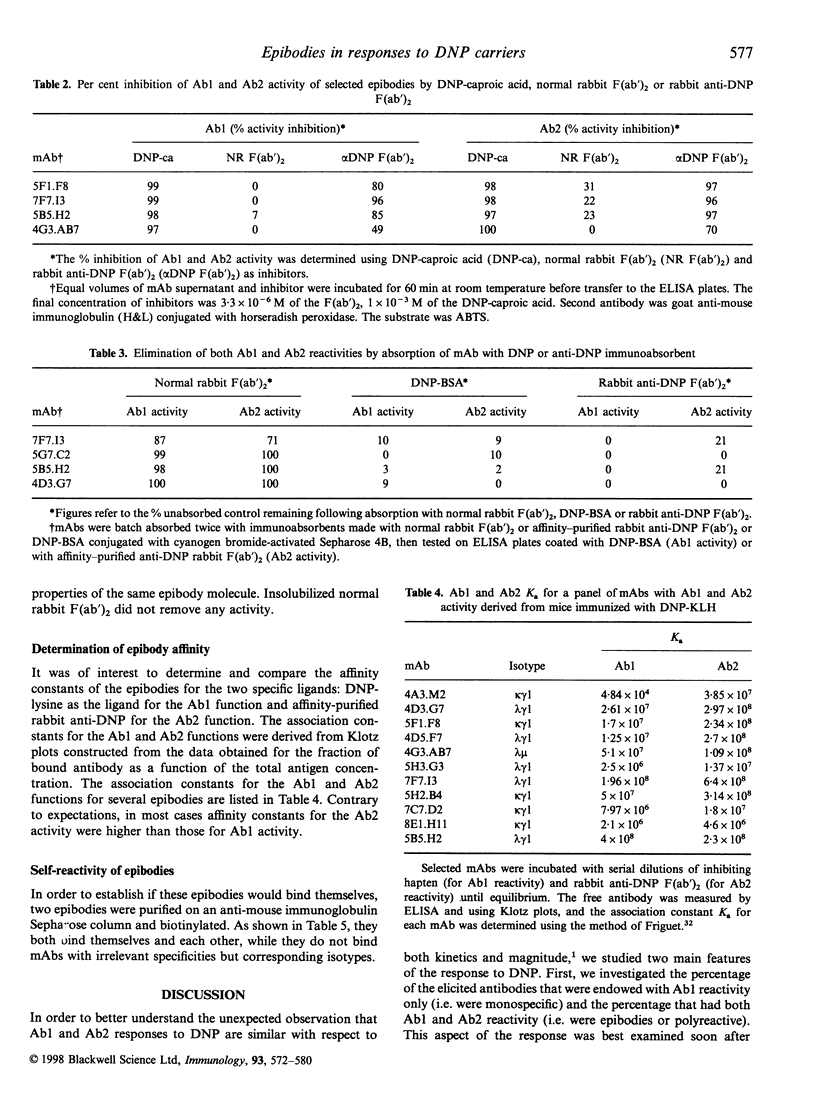
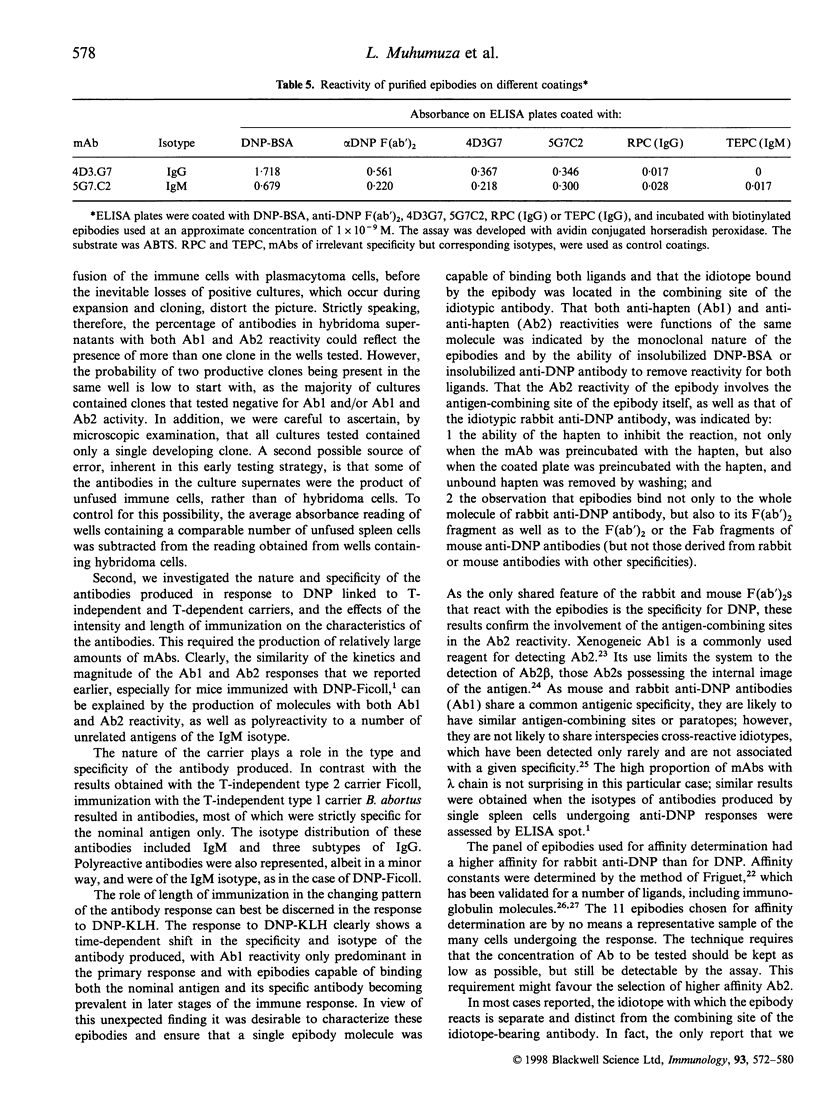

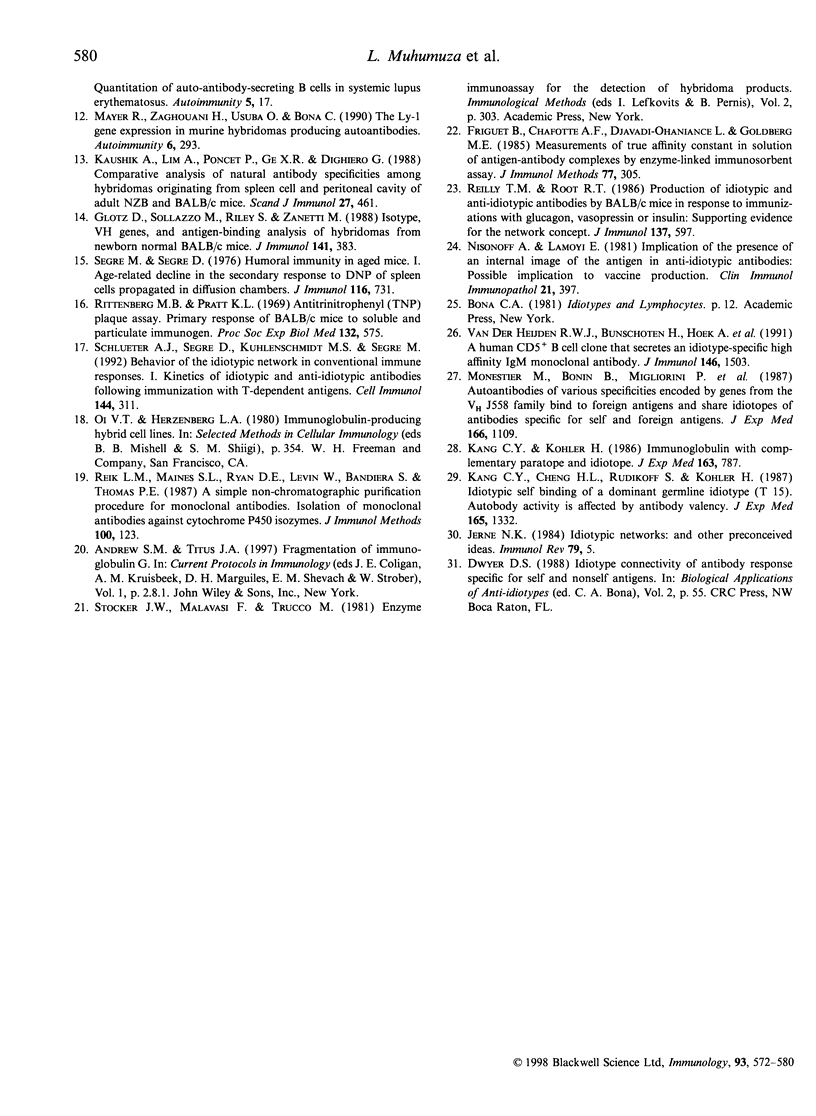
Selected References
These references are in PubMed. This may not be the complete list of references from this article.
- Bona C. A., Finley S., Waters S., Kunkel H. G. Anti-immunoglobulin antibodies. III. Properties of sequential anti-idiotypic antibodies to heterologous anti-gamma globulins. Detection of reactivity of anti-idiotype antibodies with epitopes of Fc fragments (homobodies) and with epitopes and idiotopes (epibodies). J Exp Med. 1982 Oct 1;156(4):986–999. doi: 10.1084/jem.156.4.986. [DOI] [PMC free article] [PubMed] [Google Scholar]
- Bona C. A., Kang C. Y., Kohler H., Monestier M. Epibody: the image of the network created by a single antibody. Immunol Rev. 1986 Apr;90:115–127. doi: 10.1111/j.1600-065x.1986.tb01480.x. [DOI] [PubMed] [Google Scholar]
- Chen P. P., Fong S., Houghten R. A., Carson D. A. Characterization of an epibody. An antiidiotype that reacts with both the idiotype of rheumatoid factors (RF) and the antigen recognized by RF. J Exp Med. 1985 Feb 1;161(2):323–331. doi: 10.1084/jem.161.2.323. [DOI] [PMC free article] [PubMed] [Google Scholar]
- Dwyer D. S., Vakil M., Kearney J. F. Idiotypic network connectivity and a possible cause of myasthenia gravis. J Exp Med. 1986 Oct 1;164(4):1310–1318. doi: 10.1084/jem.164.4.1310. [DOI] [PMC free article] [PubMed] [Google Scholar]
- Fischel R., Eilat D. Structure and binding properties of a monoclonal anti-idiotypic autoantibody to anti-DNA with epibody activity. J Immunol. 1992 Nov 1;149(9):3089–3096. [PubMed] [Google Scholar]
- Forsyth R. B., Hoffmann G. W. A study of auto-anti-idiotypes to BSA. J Immunol. 1990 Jul 1;145(1):215–223. [PubMed] [Google Scholar]
- Friguet B., Chaffotte A. F., Djavadi-Ohaniance L., Goldberg M. E. Measurements of the true affinity constant in solution of antigen-antibody complexes by enzyme-linked immunosorbent assay. J Immunol Methods. 1985 Mar 18;77(2):305–319. doi: 10.1016/0022-1759(85)90044-4. [DOI] [PubMed] [Google Scholar]
- Glotz D., Sollazzo M., Riley S., Zanetti M. Isotype, VH genes, and antigen-binding analysis of hybridomas from newborn normal BALB/c mice. J Immunol. 1988 Jul 15;141(2):383–390. [PubMed] [Google Scholar]
- Hunt Gerardo S., Persselin J. E., Stevens R. H. Human IgG anti-F(ab')2 antibodies possess rheumatoid factor activity. Clin Exp Immunol. 1990 Aug;81(2):293–300. doi: 10.1111/j.1365-2249.1990.tb03333.x. [DOI] [PMC free article] [PubMed] [Google Scholar]
- Jerne N. K. Idiotypic networks and other preconceived ideas. Immunol Rev. 1984 Jun;79:5–24. doi: 10.1111/j.1600-065x.1984.tb00484.x. [DOI] [PubMed] [Google Scholar]
- Kang C. Y., Cheng H. L., Rudikoff S., Kohler H. Idiotypic self binding of a dominant germline idiotype (T15). Autobody activity is affected by antibody valency. J Exp Med. 1987 May 1;165(5):1332–1343. doi: 10.1084/jem.165.5.1332. [DOI] [PMC free article] [PubMed] [Google Scholar]
- Kang C. Y., Kohler H. Immunoglobulin with complementary paratope and idiotope. J Exp Med. 1986 Apr 1;163(4):787–796. doi: 10.1084/jem.163.4.787. [DOI] [PMC free article] [PubMed] [Google Scholar]
- Kaushik A., Lim A., Poncet P., Ge X. R., Dighiero G. Comparative analysis of natural antibody specificities among hybridomas originating from spleen and peritoneal cavity of adult NZB and BALB/c mice. Scand J Immunol. 1988 Apr;27(4):461–471. doi: 10.1111/j.1365-3083.1988.tb02372.x. [DOI] [PubMed] [Google Scholar]
- Mayer R., Zaghouani H., Usuba O., Bona C. The LY-1 gene expression in murine hybridomas producing autoantibodies. Autoimmunity. 1990;6(4):293–305. doi: 10.3109/08916939008998421. [DOI] [PubMed] [Google Scholar]
- Monestier M., Bonin B., Migliorini P., Dang H., Datta S., Kuppers R., Rose N., Maurer P., Talal N., Bona C. Autoantibodies of various specificities encoded by genes from the VH J558 family bind to foreign antigens and share idiotopes of antibodies specific for self and foreign antigens. J Exp Med. 1987 Oct 1;166(4):1109–1124. doi: 10.1084/jem.166.4.1109. [DOI] [PMC free article] [PubMed] [Google Scholar]
- Nisonoff A., Lamoyi E. Implications of the presence of an internal image of the antigen in anti-idiotypic antibodies: possible application to vaccine production. Clin Immunol Immunopathol. 1981 Dec;21(3):397–406. doi: 10.1016/0090-1229(81)90228-2. [DOI] [PubMed] [Google Scholar]
- Pateraki E., Kaklamani E., Kaklamanis P., Portocalas R., Aessopos A. Autoantibodies in systemic lupus erythematosus and normal subjects. Clin Rheumatol. 1986 Sep;5(3):338–345. doi: 10.1007/BF02054252. [DOI] [PubMed] [Google Scholar]
- Puccetti A., Migliorini P., Sabbaga J., Madaio M. P. Human and murine anti-DNA antibodies induce the production of anti-idiotypic antibodies with autoantigen-binding properties (epibodies) through immune-network interactions. J Immunol. 1990 Dec 15;145(12):4229–4237. [PubMed] [Google Scholar]
- Reik L. M., Maines S. L., Ryan D. E., Levin W., Bandiera S., Thomas P. E. A simple, non-chromatographic purification procedure for monoclonal antibodies. Isolation of monoclonal antibodies against cytochrome P450 isozymes. J Immunol Methods. 1987 Jun 26;100(1-2):123–130. doi: 10.1016/0022-1759(87)90180-3. [DOI] [PubMed] [Google Scholar]
- Reilly T. M., Root R. T. Production of idiotypic and anti-idiotypic antibodies by BALB/c mice in response to immunizations with glucagon, vasopressin, or insulin: supporting evidence for the network concept. J Immunol. 1986 Jul 15;137(2):597–602. [PubMed] [Google Scholar]
- Rittenberg M. B., Pratt K. L. Antitrinitrophenyl (TNP) plaque assay. Primary response of Balb/c mice to soluble and particulate immunogen. Proc Soc Exp Biol Med. 1969 Nov;132(2):575–581. doi: 10.3181/00379727-132-34264. [DOI] [PubMed] [Google Scholar]
- Schlueter A. J., Segre D., Kuhlenschmidt M. S., Segre M. Behavior of the idiotypic network in conventional immune responses. I. Kinetics of idiotypic and anti-idiotypic antibodies following immunization with T-independent and T-dependent antigens. Cell Immunol. 1992 Oct 15;144(2):311–323. doi: 10.1016/0008-8749(92)90247-m. [DOI] [PubMed] [Google Scholar]
- Segre M., Segre D. Behavior of the idiotypic network in conventional immune responses. III. Detection and enumeration of cells producing idiotypic and anti-idiotypic antibodies by a spot ELISA technique. Cell Immunol. 1994 Nov;159(1):40–48. doi: 10.1006/cimm.1994.1293. [DOI] [PubMed] [Google Scholar]
- Segre M., Segre D. Humoral immunity in aged mice. I. Age-related decline in the secondary response to DNP of spleen cells propagated in diffusion chambers. J Immunol. 1976 Mar;116(3):731–734. [PubMed] [Google Scholar]
- van der Heijden R. W., Bunschoten H., Hoek A., Van Es J., Punter M., Osterhaus A. D., Uytdehaag F. G. A human CD5+ B cell clone that secretes an idiotype-specific high affinity IgM monoclonal antibody. J Immunol. 1991 Mar 1;146(5):1503–1508. [PubMed] [Google Scholar]


